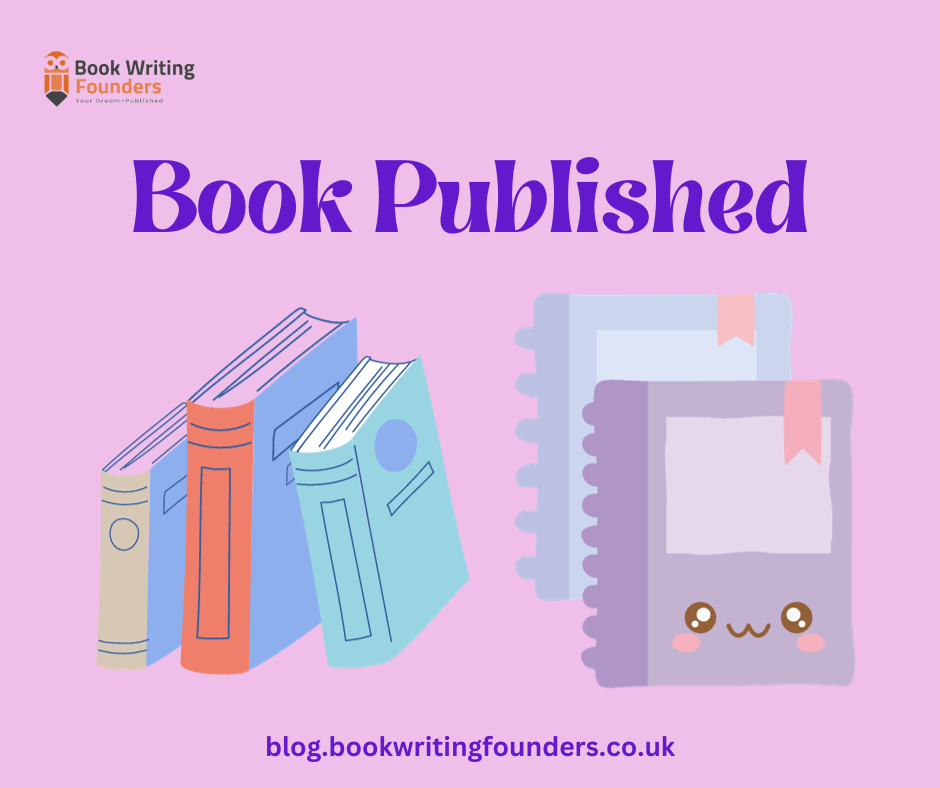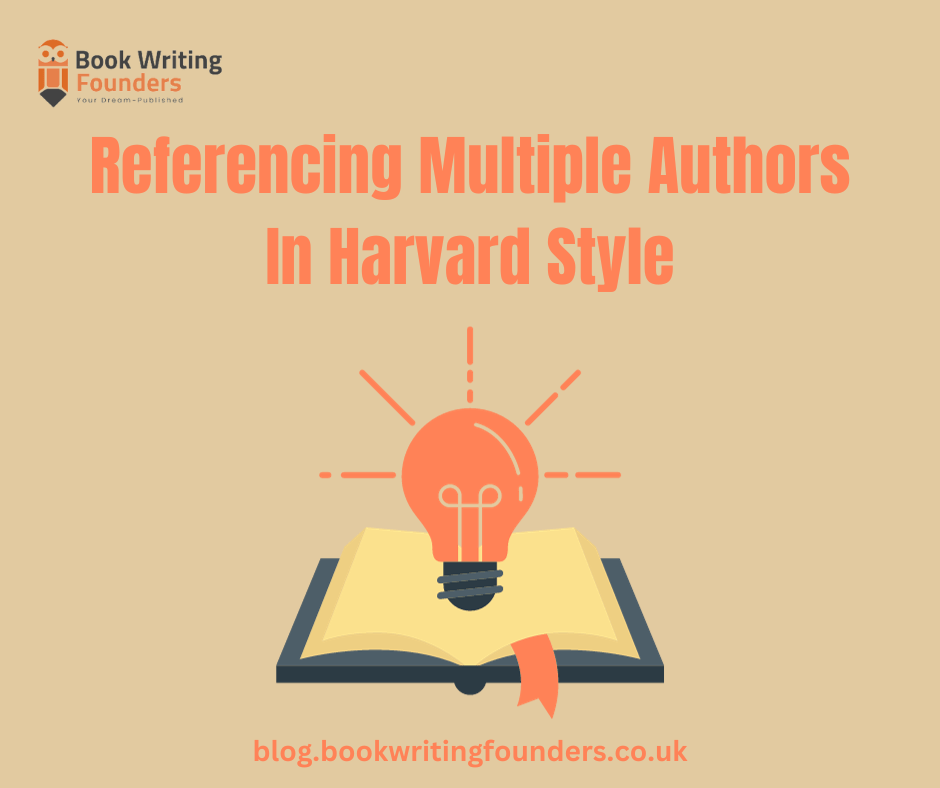
Publishing
You’ve put your heart and soul into writing a book, and now you’re ready to take the next exciting step toward publishing it. The process of getting your book published can be both exciting and scary, especially if you’re new to the publishing world.
Remember, publishing a book isn’t only about achieving a dream. It’s about connecting with people, making a difference in their lives, and making an impression that will last.
However, with the right knowledge and guidance, you can navigate through the publishing world and increase your chances of success.
The Process of Getting a Book Published:
New writers often feel lost in the publishing maze. Having a book published is an extraordinary, even miraculous event. What formerly existed just in your brain is now in the minds of many others, thanks to the magic of ink on paper (or pixels on a computer) and the transmission of your ideas, knowledge, and creativity. You may never meet these readers, yet your words might change their lives forever.
The publication procedure is outlined below:
Step 1: Refine Your Manuscript
Before you start working on getting your book released, ensure your copy is in the best shape possible, which may include insights from how to write a book about your life, which may include insights from how to write a book about your life. This includes reviewing, rewriting, and beta testing that is done carefully.
Take the time to improve your writing, fix any mistakes in grammar, and make sure that your story or material makes sense as a whole. Think about hiring a professional writer or joining a writing group to get helpful comments and make your work better.
Step 2: Research Publishing Options
Once your manuscript is polished, it’s time to explore the various publishing options, learning how to get a book published in the UK in detail. There are three primary routes to consider: traditional publishing, self-publishing, and hybrid publishing.
Traditional Publishing: Traditional publishers are established publishing houses that select manuscripts based on their marketability and potential profitability. Research reputable publishers who specialize in your book’s genre and submit your manuscript according to their submission guidelines.
Self-Publishing allows you to maintain creative control, and you can learn the ropes with guides on how to become an author independently. Platforms like Amazon Kindle Direct Publishing (KDP) and IngramSpark offer easy-to-use tools for formatting, cover design, and distribution. However, as a self-published author, you’ll be responsible for marketing and promoting your book.
Hybrid Publishing: Hybrid publishing combines elements of traditional and self-publishing. It involves a partnership between the author and a publisher who offers specific services, such as editing, design, and distribution. Research hybrid publishers carefully to ensure they align with your publishing goals.
Step 3: Prepare a Query Letter and Book Proposal
If you choose for traditional publishing, you’ll need to craft a compelling query letter, and guidance can be found on how to start writing a book, to get literary agencies and publishers interested. Your pitch letter should present you and your book, point out what makes it special, and show how well you can write. The book proposal should give an outline of your work, including who you want to read it, an analysis of the market, and an analysis of the competition.
Step 4: Find an Agent or Publisher
Literary agents act as middlemen between authors and publishers. They promote authors and their works to publishers. Getting a book deal with a standard publisher is much more likely if you find a recognized best book writers UK. Identify authors in the same field as your book, adhere to their submission guidelines, and perhaps get insights from what is ghostwriting about the industry’s inner workings.
If you’d rather send your book straight to publishers, do some study to find ones that fit the topic and submit the standards of your book. Some companies will take papers that they didn’t ask for, while others may only look at ones that come through literary managers.
Step 5: Negotiate a Book Deal
Congratulations if a publisher or writing agent shows interest, and now you can focus on how to market your book on Amazon to boost sales. At this point, it’s important to carefully look over the contract’s terms, including the fee rates, advance payments, rights, and responsibilities.
If you need to, talk to a lawyer to make sure you fully understand the rules and discuss any changes that are needed. Remember that every book deal is different, so take the time to think about the offer and make a choice that is best for you.
Step 6: Prepare for Publication
After getting a book deal, the next step is to get your work ready to be published. Depending on how you want to get your book published, you may need to work with an editor to improve your copy, finish the design of the cover, and prepare the text for print or digital forms. Work closely with your publicist, editor, and cover artist to make sure that every part of your book is done well and looks good.
Step 7: Marketing and Promotion
No matter how you promote your book, implementing aesthetic marketing ideas can play a crucial role in reaching your audience. Create a full marketing plan that includes both online and offline methods. Use social media to build your author platform, connect with your ideal readers, and get people talking about your book.
Think about having book launch parties, going to author meetings, and getting in touch with local shops and libraries to see if you can work together. Utilize book review websites, and book blogs, and seek recommendations from important individuals in your book’s field.
Step 8: Distribution and Sales
Making sure your book gets into the hands of eager readers is the last step in getting it released. If you choose standard printing, your editor will send copies to shops, internet sellers, libraries, and other places. Use sites like Amazon KDP and IngramSpark, if you are a self-published author, to make your book available in both digital and print versions. Use good price tactics to draw people and make sure you make money.
The Cost of Getting a Book Published:
If you want to print a book, you might be interested in how much it will cost. If you know how much it will cost, you can plan your budget and get ready for all the costs you’ll have to pay. In short, you should plan to pay anywhere from $0 to $10,000. Many things affect how much does it cost to publish a book uk, what version it’s in, and which resources you choose to pay for.
Costs Involved in Book Publication:
Considering the many processes involved in book production might help you estimate your total costs. Finding the proper budget and considering the particular professionals you will need to engage or the gear you will need to buy.
Any of them may be done by you to save money, or you can employ a professional to make sure your book is of the highest quality.
Cost of Publishing Books by Genre:
It seems to reason that the production expenses of a 500-page biology textbook with elaborate drawings would be higher than those of a 100-page anthology of short stories. After all, having an artist and a fact checker for the biology textbook costs money, and in the end, it’s just more paper and ink.
One strategy to reduce the overall cost of publishing your book is to define its category.
Word counts, editing standards, and artwork needs might vary widely amongst genres. The price of publishing depends on all of these variables.
The average price of publishing a book may be broken down into the following categories:
- Publishing a book typically costs between $2,000 and $4,000.
- The indexing and fact-checking charges add an extra $500 to $1,000 to the production of a nonfiction book.
- Compared to the ordinary book, the publication of a science fiction or fantasy novel may add an extra $500 to $1,000. For one, they tend to be far longer than the average book, clocking in at roughly 120,000 words as opposed to 80,000, which means higher production expenditures across the board.
- Due to the increased time and effort needed to properly research and fact-check historical fiction books, publishing these works might cost an additional $300 to $500.
- Publishing a young adult novel typically costs between $300 and $500 less than publishing an adult novel. That’s because they often don’t need graphics and clock in at approximately 60,000 words, far fewer than the 80,000 words needed for the average adult book.
- Due to the need for an artist and a book designer, the production cost of a picture book often runs between $600 and $900.
Budget for Proofreading:
After the document has been modified in every other manner possible, it is ready for proofreading. Correct any remaining mistakes in your text by reading it through at this stage.
Spelling, grammar, punctuation, and coherence errors must be fixed. This involves checking for several minutiae, such as errors, uneven formatting, missing em dashes, and so on.
Typos and other problems take the focus of the reader away from the narrative or message. Thus proofreading is essential. If there are no typos in the book, the reader can concentrate on the plot.
Indexing Fees for Your Book:
In the back of most nonfiction books, you’ll find a part called the index.
The index is a list of words and sentences that are important. There are page numbers next to each word that tells you where to find that topic in the book, as well as other words that readers and students might need to know.
People who write fiction may skip this step. Indexing, on the other hand, is a vital component of the printing process for nonfiction writers since indexes help readers find specific information and find their way around the book.
Pricing for Book Layout:
The process of formatting a book is laborious and time-consuming.
Page numbers, paragraph spacing, and line indentation must be deliberated before you begin writing your book. You must also make more aesthetic decisions, such as the typeface for the chapter titles, the line spacing, and the page color.
A well-formatted manuscript ensures uniformity, readability, and conformity to publishing standards.
You can also pay between $50 and $250 for software that helps you organize your work. Atticus is an example of a tool for writing books. The tool has models you can change to help you make a beautiful work that is ready to be published.
You can also pay between $300 and $1,000 to have a professional prepare your book.
Costs of Marketing:
The process of publishing a book doesn’t end when the online and print versions are done. After all, what good is it to print a book if no one reads it? So, you might want to plan for a few of the following business activities:
Facebook advertising starts at $5/day. With a low daily budget, you may gauge interest from prospective customers and then increase spending in response to positive results.
Promo spots cost anything from $15 to $120. The final price is on the basis of factors like the popularity of the marketing site. Also, the amount of competition in your specific field.
Many writers, even those with conventional publishers, might spend $5,000 or more on promotion. You can expect to spend a lot on marketing if you want your book to sell well.
One option is to engage a book marketing firm to do the work for you.
Social media coaching, for instance, might cost roughly $500, and so can a book marketing and promotion strategy.
The experts will advise you on the best course of action. You will still be responsible for many
of the expenses you would typically cover on your own. Consequently, you may still wind up spending up to $5,000 in addition to the cost of the professionals’ services.
Essential Steps/Elements and Detailed Insights
| Step | Details | Considerations |
|---|---|---|
| 1. Refine Your Manuscript | Review, rewrite, beta test, and improve writing quality. Consider professional help or writing groups. | Focus on grammar, coherence, and overall quality. |
| 2. Research Publishing Options | Explore traditional publishing, self-publishing, and hybrid publishing. Understand their differences and requirements. | Choose based on control, marketability, and personal goals. |
| 3. Prepare Query Letter and Book Proposal | For traditional publishing, craft a compelling query letter and detailed book proposal. | Highlight uniqueness and market analysis. |
| 4. Find An Agent Or Publisher | Look for literary agents or publishers that fit your genre. Understand submission guidelines and industry insights. | Focus on alignment with your work and submission compliance. |
| 5. Negotiate A Book Deal | Review contract terms including fees, rights, and responsibilities. Consider legal advice. | Understand and negotiate terms carefully. |
| 6. Prepare For Publication | Work on editing, cover design, and formatting. Collaborate with professionals. | Ensure high-quality final product. |
| 7. Marketing And Promotion | Develop a marketing plan with online and offline strategies. Utilize social media, events, and partnerships. | Focus on reaching the target audience and building visibility. |
| 8. Distribution And Sales | Ensure availability in physical and online stores. Use platforms like Amazon KDP and IngramSpark for self-publishing. | Implement pricing strategies and distribution networks. |
| Cost Of Getting A Book Published | Costs range from $0 to $10,000. Varies based on publishing route, genre, and resources used. | Plan budget and prepare for expenses. |
| Costs Involved In Book Publication | Includes editing, proofreading, indexing, layout, and marketing. | Balance between DIY and professional services. |
| Cost Of Publishing Books By Genre | Costs vary by genre due to different needs like artwork, length, and research. | Understand genre-specific costs. |
| Budget For Proofreading | Focus on finalizing text with no errors in spelling, grammar, and punctuation. | Ensure a clean, error-free manuscript. |
| Indexing Fees For Your Book | Important for nonfiction books for ease of information retrieval. Fiction writers may not need this step. | Fiction writers may not need this step. |
| Pricing For Book Layout | Involves formatting decisions and aesthetics. Can use software or hire a professional. | Ensure readability and adherence to standards. |
| Costs Of Marketing | Include advertising, promotional spots, and potentially hiring a marketing firm. | Plan effective marketing within budget. |
Conclusion:
If you want to publish a book, how much should you expect to pay? Putting out a book generally costs between $500 and $5,000. A lot of those costs come from paying an editor, getting a book creator, and advertising.
On average, it costs about $2,000 to print and market a book that was written by the author. Most first-time writers spend less on their first book, and as they write more books, they spend more.





